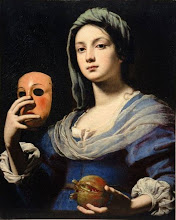Who am I? What is the Self? This is the most fundamental of questions.
Buddhism has the concept of anatta (no self) which is usually interpreted to mean that souls and selves do not exist. However, The Buddha may have meant that individual, discrete selves are an illusion, but there is a singular, undivided Self that can be realised by one who has awakened from the dream of separateness (ego). This interpretation makes The Buddha's teaching compatible with the Indian philosophy of Advaita (non-duality).
Buddhists believe in reincarnation, which suggests the existence of souls. It may be that The Buddha saw souls as merely subtler forms of the gross body, and not something one should identify with. Perhaps this is the intention of the anatta doctrine. Centuries later, the sage Shri Shankaracharya wrote his Tad Niskala, which states that who you are is not the body, or the sheaths of the subtle body (soul), but Shiva (the Self of all that exists). Shri Mataji Nirmala Devi has said that Shri Shankaracharya was a reincarnation of The Buddha. Shankara encouraged devotion for the Adi Shakti, the feminine aspect of Shiva, the Universal Self, who manifests in each of us as the Kundalini. This is because, without Kundalini awakening, Self-realisation is not possible.
One might ask why The Buddha bothered to try to liberate people if he did not believe in souls, or selves. What would be the point of mere matter trying to enlighten mere matter? It's a good question. According to tradition, The Buddha did initially consider that perhaps teaching people about enlightenment would be a futile task. The answer may be that the Self, like the sun, must shine, no matter that there are clouds of ignorance and illusion. Suffering is due to the illusion of separateness, and this illusion should be dispelled, even if there are ultimately no 'others' who suffer.
The Buddhist scholar Alexander Wynne considers this issue, and also questions the emphasis on therapy in the contemporary offshoot of Buddhism, Mindfulness Meditation, in contrast to the Buddha's emphasis on Self-realisation as the main aim. In his article Who Was The Buddha?, he also tries to separate the mythical and historical figure of Gotama Buddha.
Read the article. here

































